What can we do about it?
Adaptation options (MfE Step 5: Identify Options and Pathways)
Where an intolerable risk was predicted to occur[1], adaptation options were investigated. Four overarching adaptation policies were considered: ‘avoid’, ‘accommodate’, ‘protect’ and ‘retreat’ strategies, and various adaptation options are included within these. That is:

Avoid – refers to identifying future no-build areas and using planning tools to prevent inappropriate, new (or infill) development in a hazard zone. Appropriate or adapted development may be possible, e.g., temporary or mobile structures[2], in some circumstances.

Accommodate – refers to accommodating (“living with”) the changes (e.g., retrofitting buildings, raising floor levels, converting agricultural land to coastal wetlands or installing innovative infrastructure/temporary defences). This includes maintaining the health of natural defences, for example, through dune and wetland restoration, ensuring the maintenance of sediment supply and managing access.

Protect – refers to engineering works to mitigate the threat of erosion, flooding or waves. Protection options may be “soft” or “hard”. Soft measures may include ‘enhancing’ natural defences through beach push-ups or dune reshaping (see figures below), sediment recycling (from one part of a beach to another) or beach nourishment stabilised via planting. Hard measures may include improving existing or constructing new rock revetments, seawalls (including backstop walls below restored dunes) and stop banks/drains, as well as breakwaters (including offshore breakwaters/reefs) and groynes designed to retain beach sand where the longshore drift of sand occurs[3], as well as cliff stabilisation works.
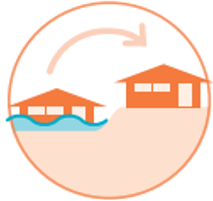
Retreat – refers to a process of withdrawal from a location when the risk associated with staying becomes intolerable. This could require a change in planning practices and the removal of public infrastructure and private assets, often providing accommodation space (space for nature to roll back).
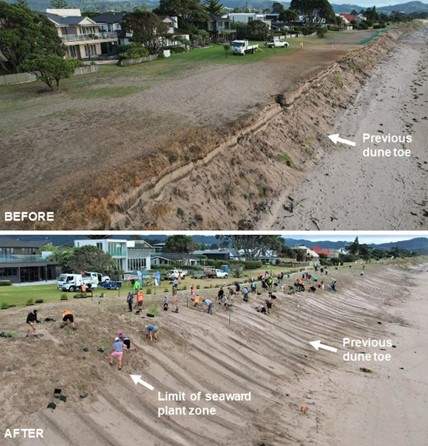
Where adaptation is unnecessary or not advocated (e.g., where the consensus is that a beach should evolve naturally), ‘no active intervention’ is an appropriate policy. However, in all cases ‘be prepared’ should be a consistent mantra (including for low-risk coastal locations). Being prepared typically includes two actions:
-
Providing regular information to stakeholders on hazards, risks and management measures. For the Coromandel Peninsula, this was one of the objectives of the SMP project.
-
Establishing hazard warning systems and preparing & implementing emergency response plans (which TCDC’s Emergency Management & Community Resilience team have in place).
Option evaluation (MfE Step 6)
For Policy Unit’s where adaptation was determined to be necessary, viable adaptation options[4] were:
-
technically assessed (at a high level) vis-à-vis where they would be applicable (within a Policy Unit) and the approximate timeframe over which they would be appliable (short, medium or long-term - see figure below), if they would address the hazard(s), their capital cost, and if there would be any consequential environmental harm, social consequences or impacts on mana whenua; and
-
considered by the Coastal Panels (in light of this assessment) and how they aligned with the project’s objectives and values of the community.
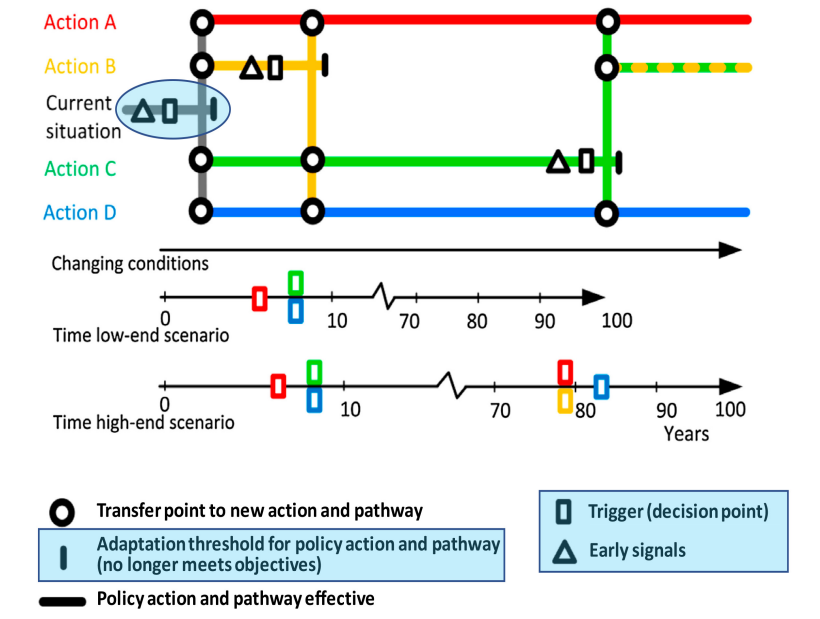
To support the technical assessment of some ‘protect’ options (i.e., where a potential requirement for significant or functional infrastructure was identified), a Coastal Protection Feasibility Study was undertaken. This study was used to guide decision making and provided information such as the likely footprint and design of protection (rock revetment or wall), requirements for auxiliary infrastructure (such as stormwater pumping), likely constraints, and indicative costs. Locations included in the study included Kopu, Thames (see succeeding images below of cross-section and plan view), Moanataiari, Tararu, Te Puru, Colville, Whitianga (including Buffalo Beach), Tairua and Whangamatā town (not beach).
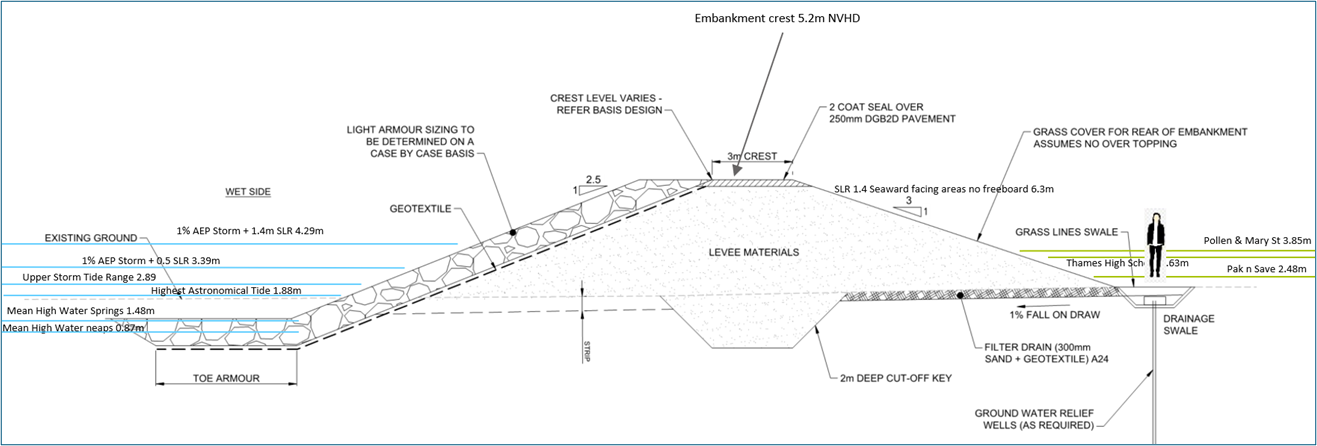
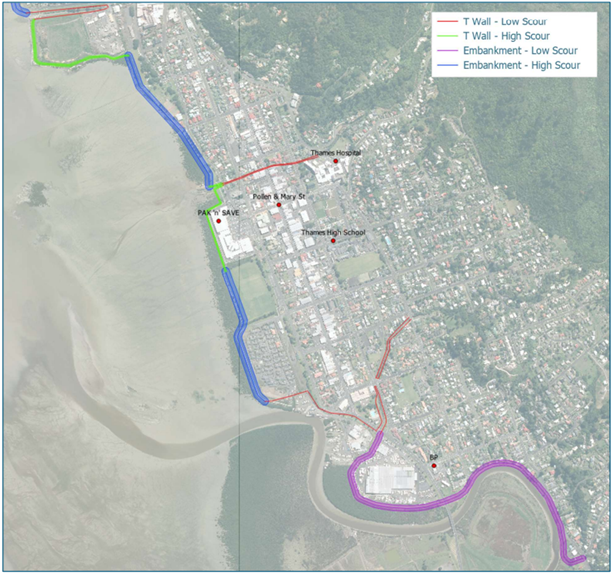
As a result of the option evaluation process, of the locations considered in the protection feasibility study, long-term protection was advocated for Kopu, Thames, Whitianga town (but not necessarily Buffalo Beach), Tairua and Whangamatā town.
It was not advocated for Moanataiari, Tararu, Te Puru or Colville.
From this assessment, a shortlist of adaptation options was derived for each Policy Unit (see shortlisted adaptation options for Whangapoua Beach) from an ‘adaptation menu’ and draft CAPs were prepared for consultation (see draft CAP for Ohaku)[5].
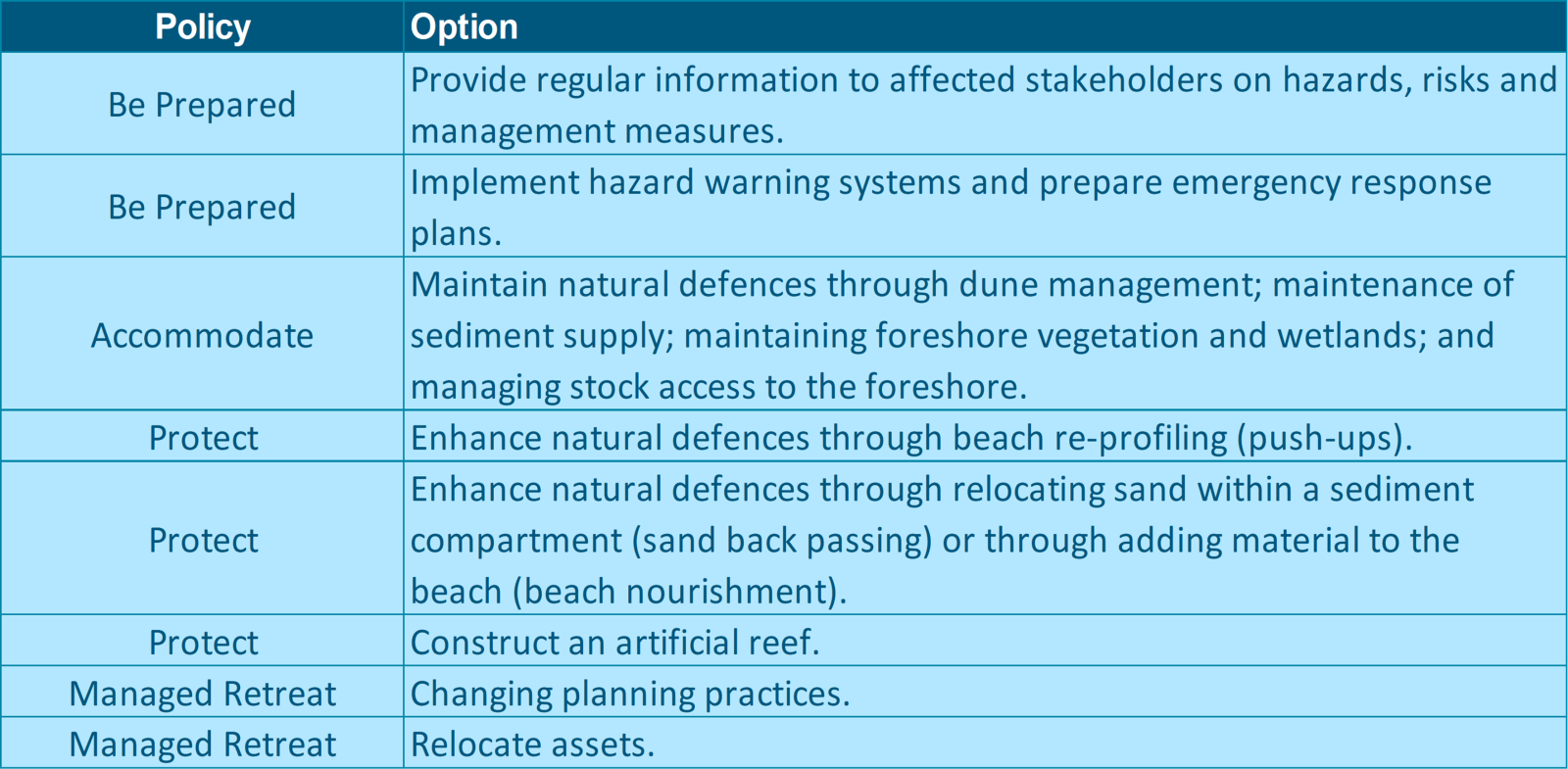
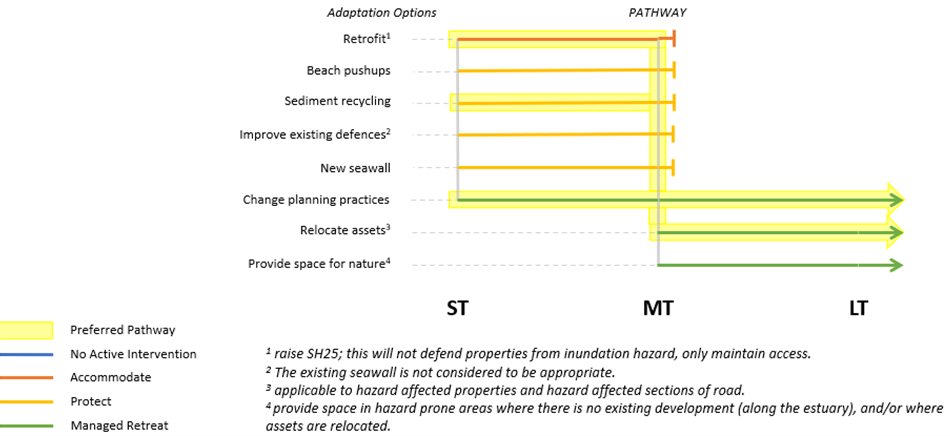
Where a preferred adaptation pathway was advocated by the Coastal Panel, this was indicated, but all options under consideration were still shown. At this stage in the process, neither adaptation thresholds nor signals or triggers for action (decision points) had been defined.
Footnotes
- 1 Informed by discussion with the Coastal Panels and feedback from the wider community.
- 2 This is a form of ‘accommodating’ change hence avoid and accommodate have been considered together herein.
- 3 Frequently absent on the Coromandel’s pocket beaches.
- 4 Options applicable to the circumstances (for example, while dune restoration is a viable option worth consideration for much of the east coast of the Coromandel Peninsula, it is not a viable option for the west coast).
- 5 Where the colour of the action line indicates the nature of the adaptation policy, i.e., blue = no active intervention, brown = accommodate (and/or avoid), orange = protect, and green = retreat.